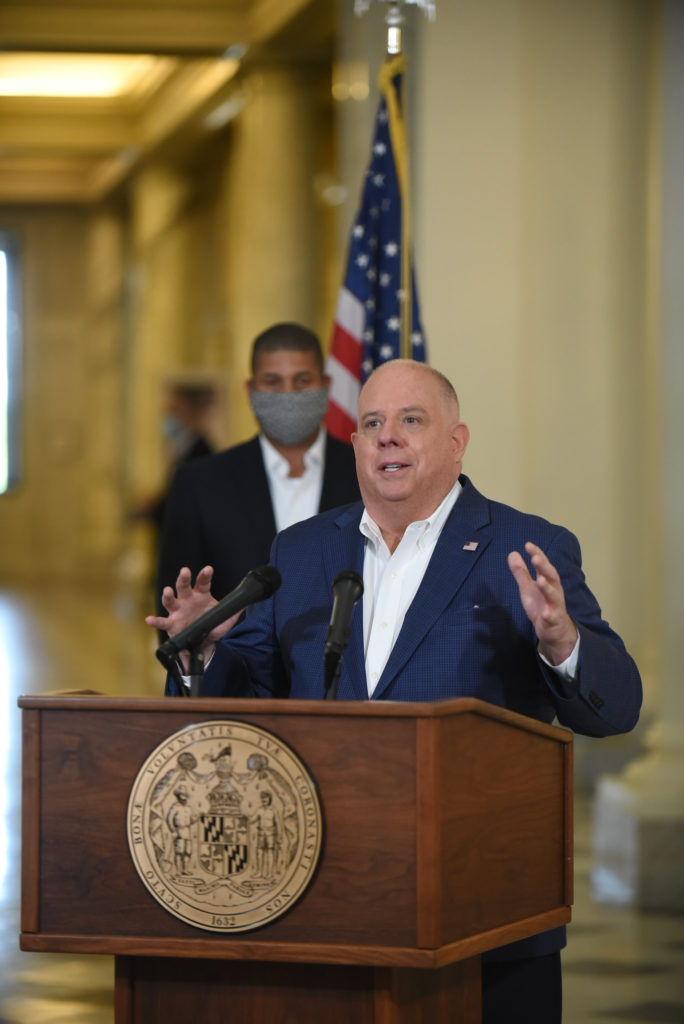
Sometime next week, Governor Larry Hogan expects to unveil a roadmap for restarting Maryland’s economy. But during a press conference Wednesday afternoon, Hogan stressed that the decision to reopen the economy will be more difficult than last month’s decision to close it down.
Maryland officials are seeing “hopeful signs” that widespread adherence to social distancing and other mitigation practices is lessening the spread of COVID-19, Hogan said.
The infection rate “is better than we had hoped and we think we are making a difference. But the worst possible thing that could happen would be for people to say, it’s not that bad, let’s go back to normal,” Hogan said. “Right now is really the worst possible time. We are two weeks behind New York and Louisiana. We are not one of those states that is over the hump and coming down. We are still going up in the whole Washington metropolitan area… We are asking for caution.”
Maryland officials have already spent weeks discussing a possible roadmap to reopening the economy, Hogan said. The governor is also scheduled to talk with the Mayor of Washington, D.C. and the Governor of Virginia later this week about taking a collaborative approach to reopening the region’s economy.
While specifics of the roadmap aren’t yet known, some heavily relied upon information sources may shed light on the prerequisite conditions for easing COVID-19 restrictions and reopening the economy.
Dr. Scott Gottlieb – a former FDA Secretary and an advisor to Governor Hogan – was the lead author of “National Coronavirus Response, A Road Map to Reopening” published by the American Enterprise Institute on March 28. It states that reopening an economy hinges on four specific achievements:
- A sustained reduction in cases for at least 14 days,
- Hospitals in the state are safely able to treat all patients requiring hospitalization without resorting to crisis standards of care,
- The state is able to test all people with COVID-19 symptoms, and
- The state is able to conduct active monitoring of confirmed cases and their contacts.
One model that analyzes hospital capacity provides a hopeful sign of Maryland nearing the first criteria. Created by the University of Washington’s Institute for Health Metrics and Evaluation [IHME], the April 13th IHME model showed an April 11th peak for Maryland in new hospitalizations and a downward trend in admissions into early May. If that predicted rate of decline holds true, the IHME model suggests the first condition could be achieved by the first week of May. Firm estimates are not available of when the state might achieve the other prerequisite conditions related to hospital capacity, testing and monitoring.
During his Wednesday press conference, Hogan said the state is currently dealing with limited testing capacity and is working towards a goal of conducting 10,000 tests per day in order to more fully identify infected residents. The state is also working to expand contact tracing of COVID-19 patients.
Meanwhile, medical experts caution that a COVID-19 vaccine will likely take 18 to 24 months to develop.